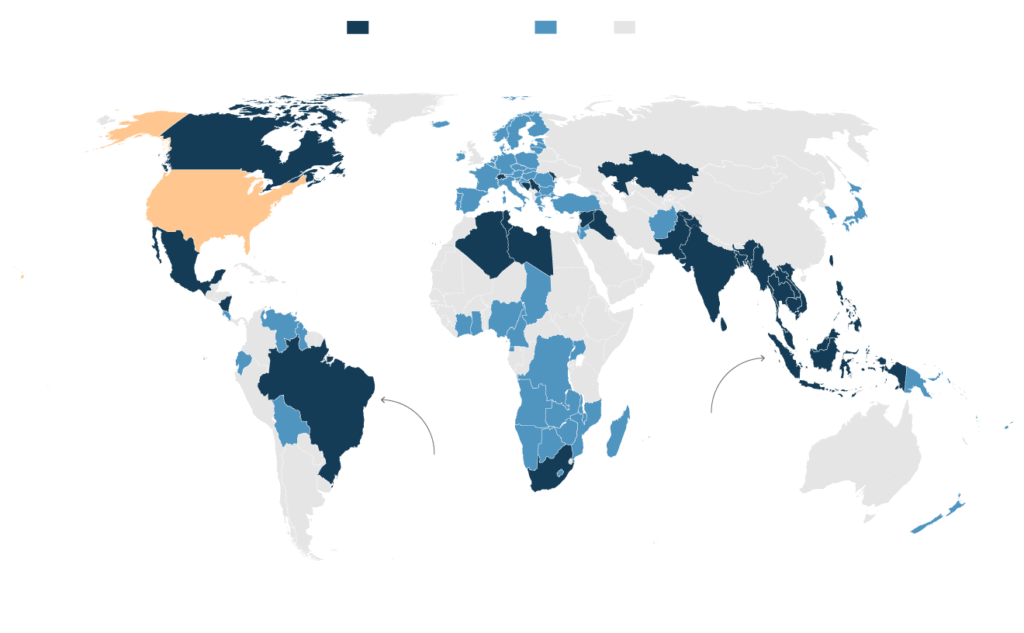PM Modi pushes back against Trump’s demand to stop Russian oil imports, defending India’s energy strategy amid global tensions.

Modi Stands Firm as Trump Pressures India to Cut Russian Oil Imports
In a growing diplomatic clash, former U.S. President Donald Trump has demanded India cease importing oil from Russia, accusing New Delhi of unintentionally financing Russia’s war in Ukraine—a charge vigorously denied by Indian leadership.
Trump’s Escalating Pressure
Trump has already imposed a 25% reciprocal tariff on U.S. imports from India, effective August 1, 2025. He further threatened additional duties—up to 100%—and unspecified penalties if India continues buying Russian oil and military equipment.
Stephen Miller, Trump’s deputy chief of staff, sharply criticized New Delhi, saying: “It is not acceptable for India to continue financing this war by purchasing oil from Russia,” and warning that India now rivals China in Russian oil purchases.
Trump also questioned India’s economic health and asserted that energy deals with Pakistan represented a shift in U.S. strategic thinking, further straining relations with India.
Modi’s Defiant Response
Prime Minister Narendra Modi has responded with resolute defiance. At a rally in Uttar Pradesh, he emphasized India’s sovereignty and urged citizens to support domestic production. He reiterated the mantra: “We will buy those things which have been made by the sweat of an Indian”.
Indian authorities have made it clear that no formal directive was issued to halt Russian oil imports. Both state and private oil refiners retain commercial discretion to purchase based on price, grade, logistics, and strategic contracts—many of which are long-term.
India Rebuttals: Double Standard?
India has defended its stance, calling out Western hypocrisy. Officials argue that while India is criticized, the U.S. and EU continue substantial Russian trade—U.S. imports of strategic materials and EU’s €67.5 billion in Russia trade in 2024, notably.
India’s Ministry of External Affairs described the tariff threat as “unjustified and unreasonable,” positioning its energy imports as essential to meet domestic demand and support economic growth.
🔷 The High Stakes Trade Arena
The standoff is unfolding amid stalled U.S.–India trade talks stalled over market access issues—especially agriculture and dairy. Trump has increasingly leveraged tariff threats to extract concessions from India while signalling openness to a deal if U.S. strategic exports are boosted.
Trump’s tougher approach marks a stark contrast to his earlier years in office when the U.S. saw India as a counterweight to China. Now, protective tariff policies and veiled pivot to Pakistan complicate bilateral trust.
India’s Congress party has also raised its voice—Congress spokesperson Jairam Ramesh sarcastically dismissed the Modi–Trump “friendship,” calling current U.S. demands costly for India. Opposition leaders emphasized India’s ability to resist external coercion and defend its sovereignty.
Geopolitical and Economic Implications
- For India, halting Russian oil could jeopardise energy security. Moscow offers deeply discounted crude, which has grown from just 1% of India’s imports before 2022 to over 30% today—making India the second-largest buyer of Russian oil after China.
- Rescinding those imports overnight would disrupt supplies to both private players, including Reliance and Nayara, and public sector refiners bound by existing long-term contracts .
- For the U.S., aggressive tariffs risk slashing Indian exports—estimated to drop as much as 30% this fiscal year—and potentially alienating a strategic partner in the Indo-Pacific.
The Broader Context & Next Steps
This friction emerges as the world grapples with a shifting power dynamic. India’s refusal to comply underscores its pursuit of strategic autonomy, balancing ties with both Russia and the West while resisting external pressure.
Observers warn that the impasse could reshape Indo‑U.S. relations—potentially reversing a decade of deepening ties. Yet, some analysts suggest India may still find diplomatic room to negotiate a face-saving trade package for Trump without sacrificing core economic interests.
Summary Table
| Key Issue | Trump | Modi / India |
|---|---|---|
| Russian Oil Imports | Must halt immediately | Continue commercial purchases; no directive to stop |
| Tariffs and Penalties | 25% tariff now; 100% or more threatened | Calls tariffs unfair and unreasonable |
| Financing Ukraine War | Accuses India of enabling through trade | Rejects claims; cites hypocrisy in Western policy |
| Trade Deal Incentives | Wants U.S. market access, energy exports | Reluctant to compromise agriculture or local biz |
| Bilateral Relations | Cooling despite prior warmth with Modi | Emphasizes sovereign foreign policy and independent stance |
In sum, Prime Minister Modi has responded to Trump’s escalating tariff threats and security criticism with a determined stance—insisting India’s oil policy remains commercially driven, rooted in national interest rather than geopolitics. With bilateral trade negotiations still open, India appears poised to defend its energy needs and sovereignty while leaving limited room for U.S. leverage.
READ ALSO…….Modi Stands Firm Amid U.S. Pressure Over Russian Oil Imports 2025














 Categories
Categories









